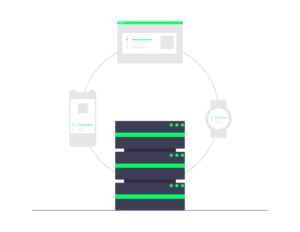About ALLEGRO ‘Agile ultra low energy secure networks’
 ALLEGRO aims at designing and validating a novel end-to-end sliceable, reliable, and secure architecture for next-generation optical networks, achieving high transmission/switching capacity
ALLEGRO aims at designing and validating a novel end-to-end sliceable, reliable, and secure architecture for next-generation optical networks, achieving high transmission/switching capacity
- with 10 Tb/s for optoelectronic devices and 1 Pbt/s for optical fiber systems
- low power consumption/cost
- with > 25% savings
- and secure infrastructures and data transfers.
The architecture relies on key enabling innovations:
- smart, coherent transceivers exploiting multi-band & multi-fiber technologies for P2P and P2MP applications, based on e.g., high-speed plasmonic modulators/photodetectors and programmable silicon photonic integrated waveguide meshes;
- loss-less, energy-efficient transparent photonic integrated optical switches, eliminating OEO conversions, e.g., with on-chip amplification in the O-band for datacom applications;
- a consistent approach to security, in terms of functional/ protocol architectures and communications, further improving QKD systems, enabling optical channel co-existence and researching on quantum-resistant (post-quantum) cryptography, developing systems based on physically unclonable functions; and
- a scalable AI/ML assisted control and orchestration system, responsible for autonomous networking, dynamic and constrained service provisioning, function placement and resource allocation, leveraging devices increasing programmability and overall network softwarization.
To achieve the target objectives and KPIs, ALLEGRO has defined a clear methodology ending in ambitious demonstrators. The consortium includes a good balance of industry and research/academia with know-how in complementary fields.
The results of ALLEGRO will be disseminated in leading conferences, events, and high-impact journals. They will have a concrete and measurable economic and social impact, contributing towards achieving key European objectives, reinforcing European leadership and digital sovereignty in the ongoing digital and green transition.
Project News
Insights from ALLEGRO : Multi-Objective Optimization without 𝜀-Constraints
In our recent analysis of Figure 35 from ALLEGRO , we explored the optimization landscape without 𝜀-constraints and the outcomes were remarkable. 📈 Key finding: Even in the absence of constraint tuning (indicated by "inf"), we identified a feasible solution that...
Insights from Lexicographic Optimization in the Allegro Project
In our latest analysis within the Allegro project, we dove deeper into how objective prioritization influences optimization outcomes. 🧠 From the charts, one pattern is unmistakable: The primary objective (first in the lexicographic order) consistently achieves the...
Exploring Sequencing Strategies through Lexicographic Optimization
As part of our work on the Allegro project, we investigated the effects of various sequencing strategies by framing our multi-objective optimization challenge as a lexicographic optimization problem. 📊 In the analysis, we explored all permutations of three key...
Workload Distribution & Cost Analysis in Hierarchical Cloud-Edge Infrastructures
As part of the Allegro Project, we explored how infrastructure layers are utilized under different optimization goals — with some insightful findings. 📊 Layer Utilization (Figure 32): Latency Optimization heavily favors the near-edge due to its proximity and...
Performance Evaluation in Hierarchical Cloud-Edge Infrastructure
As part of our work with Allegro, we evaluated performance across two hierarchical cloud-edge topologies: 📊 Topologies Analyzed: Basic: 19 nodes Extended: 53 nodesBoth consist of 3 layers: near-edge, far-edge, and cloud, with the cloud layer provisioned to handle all...
Advancing Resource Allocation with Multi-Agent Rollout ALLEGRO Project Update
In the context of the ALLEGRO Project , we developed a powerful Multi-Agent Rollout Mechanism to further optimize microservice placement across distributed edge/cloud infrastructures. 🌍⚙️ 🧠 Why Rollout?Standard heuristics can be fast but suboptimal. Exact methods? Too...
Project NEWS: ALLEGRO Greedy Resource Allocation Mechanism
As part of the #ALLEGRO project , we developed an intelligent Greedy Resource Allocation Mechanism for efficient microservice placement across edge/cloud infrastructure. 🌐⚙️ 🔍 What does it do?Our heuristic approach balances performance and resource efficiency by...
Containerized Applications in the Edge-Cloud Continuum: A Smarter Way Forward
As digital infrastructure evolves, traditional monolithic applications are rapidly reaching their limits. With the rise of 5G/6G, virtualization, and optical networks, application design must adapt to meet increasing Quality of Service (QoS) demands. Enter the...
Lexicographic Optimization in Action: Prioritizing What Matters in Multi-Objective Problems
In our latest work on the Allegro project, we applied lexicographic optimization to tackle complex combinatorial problems involving conflicting objectives like cost, latency, and availability. Rather than optimizing all objectives at once, lexicographic optimization...
Allegro Project Update: Performance Evaluation of DRL-based Storage Allocation
As part of our ongoing work in intelligent distributed storage, we evaluated the performance of our Deep Reinforcement Learning (DRL) mechanism during the inference stage, comparing it against an optimal solver across various optimization objectives. 🧠 Figure 26...
